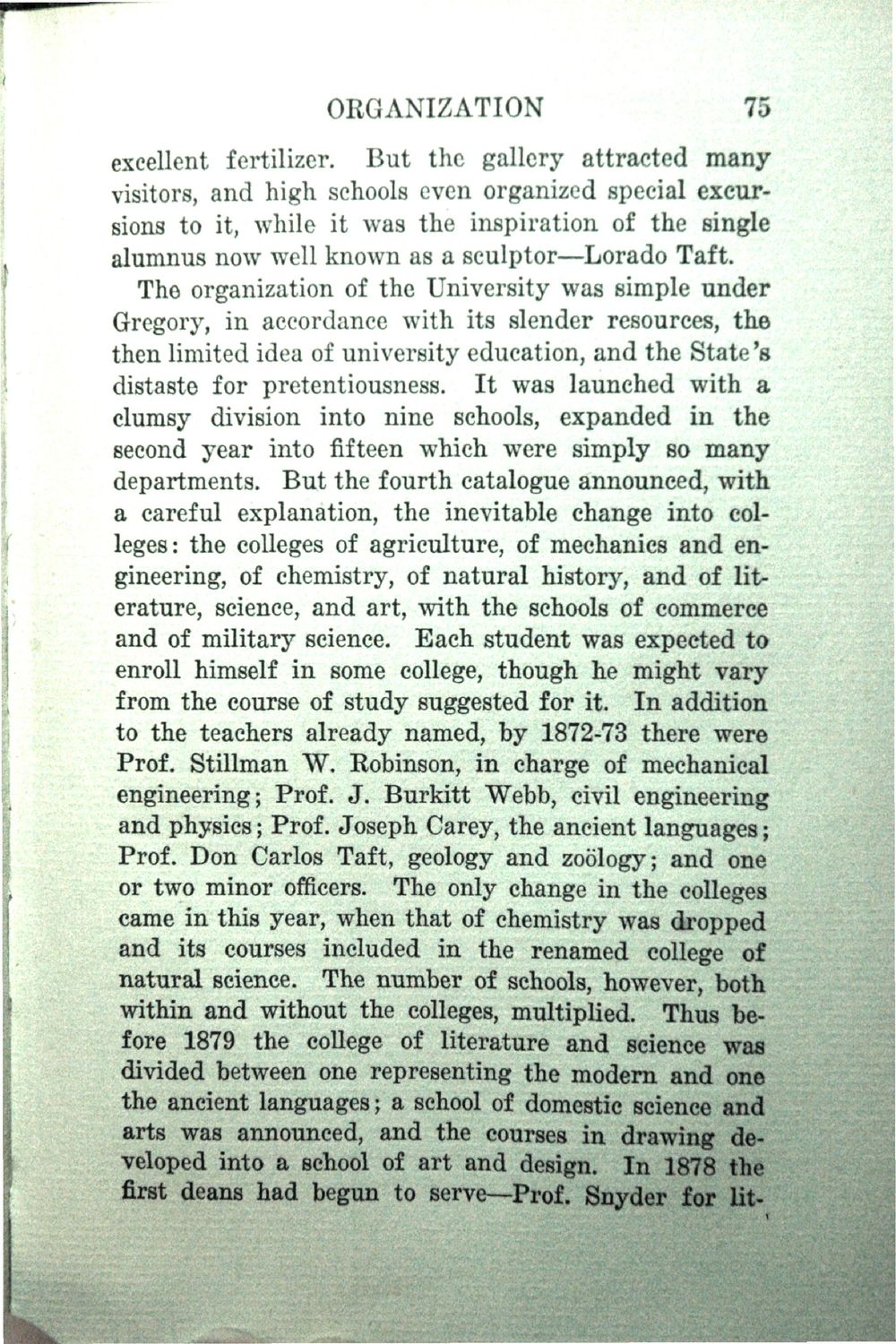| |
| |
Caption: Book - History of the University (Nevins)
This is a reduced-resolution page image for fast online browsing.

EXTRACTED TEXT FROM PAGE:
ORGANIZATION 75 excellent fertilizer. But the gallery attracted many visitors, and high schools even organized special excursions to it, while it was the inspiration of the single alumnus now well known as a sculptor—Lorado Taft. The organization of the University was simple under Gregory, in accordance with its slender resources, the then limited idea of university education, and the State's distaste for pretentiousness. It was launched with a clumsy division into nine schools, expanded in the second year into fifteen which were simply so many departments. But the fourth catalogue announced, with a careful explanation, the inevitable change into colleges: the colleges of agriculture, of mechanics and engineering, of chemistry, of natural history, and of literature, science, and art, with the schools of commerce and of military science. Each student was expected to enroll himself in some college, though he might vary from the course of study suggested for it, J i n addition to the teachers already named, by 1872-73 there were Prof. Stillman W. Robinson, in charge of mechanical engineering; Prof. J. Burkitt Webb, civil engineering and physics; Prof. Joseph Carey, the ancient languages; Prof. Don Carlos Taft, geology and zoology; and one or two minor officers. The only change in the colleges came in this year, when that of chemistry was dropped and its courses included in the renamed college of natural science. The number of schools, however, both within and without the colleges, multiplied. fJThus before 1879 the college of literature and science was divided between one representing the modern and one the ancient languages; a school of domestic science and arts was announced, and the courses in drawijg SH veloped into a school of art and design. | | | g | | ^ Q | first deans had begun to serve—Prof. Snyder ^ r i | § |
| |